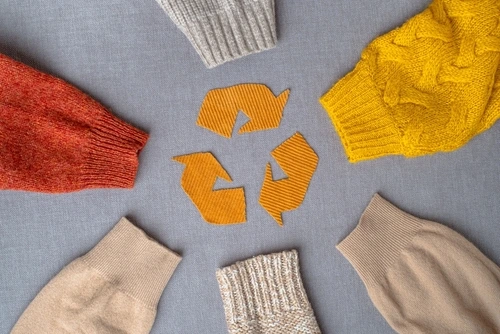
Fast fashion is no longer fashionable – at least, among those who care about sustainability. Largely mass-produced, using environmentally less suitable materials and transported thousands of miles from the factory floors to shop shelves, modern clothing is irretrievably associated with pollution and waste.

As consumer habits increasingly prioritise sustainable alternatives to fast fashion product lines, it is up to fashion brands to build new ways to preserve resources and drive sustainability at all levels of the business.
The challenge reminds Infor’s fashion strategy director, Helene Behrenfeldt, of the time she spent in another sector. “Fashion is moving towards the way of the food and beverage industry,” says Behrenfeldt, placing more emphasis than ever before on the origin of raw materials and the efficient transportation of goods.
“Regulations on food traceability – going all the way from identifying the animal to the tracking and tracing of food processing – have been around for years now,” she adds. “Fashion is going down the same route.”
Having clothing manufacturers embrace those principles of sustainability and transparency is becoming a requirement that can be managed through the better collection of data across the supply chain. In most respects, the fashion industry operates in a linear way: clothes are made, supplied, worn and, finally, disposed of, with relatively few items avoiding landfill in favour of the charity shop or recycling centre.
Circular fashion, by contrast, seeks to preserve the life of a given shirt, dress or jumper beyond its first purchase. This, naturally, requires incorporating new designs and processes that are designed to extend the item’s lifetime. According to research by the Ellen MacArthur Foundation, the restoration, resale, repair, customisation and rental markets could grow to be worth $560bn, with circular models that account for under 4% of today’s global fashion market potentially rising to 23% by 2030.
Circular fashion begins with adopting sustainable materials, to better ensure the recirculation of the item back into the economy after its initial purchase. Smart use and monitoring of resources, such as water and energy during the production process, will also yield benefits for the fashion brand, creating efficiencies that should help to reduce costs.
“Fashion brands need to think more carefully about the services they provide in order to offer ways to extend the lifetime of products,” says Behrenfeldt.
Tech initiatives in fast fashion
Some companies have proved especially creative in this area. Nudie Jeans, a leading denim provider in Sweden, has expanded its service portfolio to include patching up and repairing customers’ jeans. Swedish retail giant H&M, meanwhile, incentivises recycling, stating their stores “accept any preloved clothes and textiles for recirculation and recycling”.
Additionally, “a lot of people throughout the fashion industry are now talking about the need for product passports”, says Behrenfeldt. “That can be as simple as a QR code that sits on the garment, which the customer scans to reveal the product’s life cycle from its creation up to the options to extend use, such as repair or recycle.”
Seriously committing to sustainability in the fashion industry also requires thought on how to improve processes behind the scenes. “What people forget about is the back end,” says Behrenfeldt. “That’s where the majority of the environmental impact sits.” Remedying requires investing in new ways to source materials, as well as implementing agile software that enables inventory tracking and greater flexibility within production.
“Working with vendors and suppliers to eliminate waste and improve their energy usage will also make a major contribution. Such engagement across one’s supply chain is only possible with the technology in place to ensure full visibility and accountability at all stages of production.
Infor’s fashion ERP solution allows for more efficient collaboration between suppliers, ensuring new collections are being produced in a sustainable way. Crucially, for companies seeking to boost the sustainability and transparency of their supply chains, systems like this can also help in understanding environmental impact, pinpointing areas of wastage, and assisting in building the products and services that empower consumers to prolong the lifetime of the products they’re holding in their hands.
“These are steps that companies in the fashion industry need to consider,” says Behrenfeldt. “How do you produce zero waste? That’s impossible for the fashion industry, so, manufacturers should take whatever steps they can to minimise their impact on the environment – and make sure this information is visible to the consumer.”.








